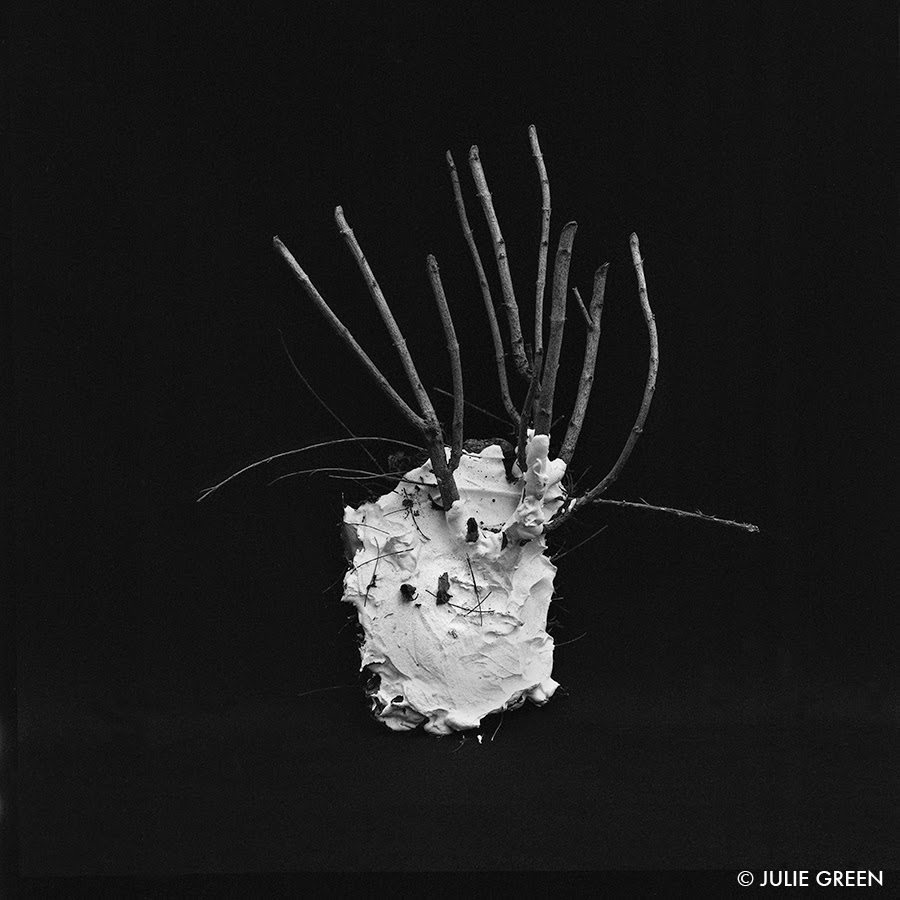Detritus
 |
| "Garvanza No. 2" from The Detritus Series |
de·tri·tus
dəˈtrīdəs/
noun
noun: detritus
dəˈtrīdəs/
noun
noun: detritus
| Synonyms: debris, waste, refuse, rubbish, litter, scrap, flotsam and jetsam, rubble; remains, remnants, fragments, scraps, dregs, leavings, sweepings, dross, scum, trash, garbage; informal dreck "areas littered with military detritus" |
- gravel, sand, silt, or other material produced by erosion
- organic matter produced by the decomposition of organisms
I have started a series of portraits that don't involve people. I wanted to explore black, white and grey tonalities through an exercises I created for myself to apply Bauhaus theories of design and space while using the photographic technique of the zone system. Thinking about ways I could explore these tonalities as a subject, I set up a Duvateen in my backyard and in open shade, began to ponder what kind of subject matter would work best for this project. The space didn't allow for very large objects but as I picked up a stick and began ruminating on what I might use, I remembered the beautiful roots and twigs that I had just dug up in my garden and had been holding on to purely due to their structural form.
 |
| "Garvanza No. 3" from The Detritus Series |
As I placed the twigs on the black backdrop, light fell on the form and what began to emerge excited me. I sat quite a long time watching how the light fell gently on its humble structure. I wanted to capture a portrait of nature by elevating the remnants found spread at its feet in a formal way. What I wasn't seeing though was a pure white which I desperately wanted to include in this tonal exercise. Thinking about ways I could include this high key element, I struck upon the idea of pouring plaster of paris at the base of the twigs to a) stabilize them b) to provide the pure white I was looking for and as the project progressed the material revealed itself to be c) a unifying element!
My mind began to race with excitement every time I came in contact with nature. Throughout the year, every place I would go became a treasure hunt, collecting organic material that I felt best represented the environment I was in. As the project evolved, my mind was perpetually drawn to natural structures that I could capture. I found myself pulling over one day in the town of Buttonwillow, a sleepy little town in the San Joaquin Vally. I've always loved the name but usually speed by up and down Interstate Highway number 5.
 |
| "Buttonwillow No. 2" from The Detritus Series |
As I saw it quickly pass by as usual, I noticed tumbleweeds and bramble lining the side of the road, randomly stuck in intervals in the low wooden fence. I knew I wanted to capture one of them for the series. What I wasn't aware of was how painful their sharp thorn-like barbs are and on the way home, it had a way of leaning over to remind me how wild nature seemed out of place as a passenger in the front seat of my car! This structure looked beautiful when I dipped the tips of the tumbleweed in plaster. The brittle nature of the dried up weed was a perfect foil for the medium and when the plaster dried, made it easier to handle the sharp points. It also accentuated the structure of each branch.
Staying in Point Reyes National Seashore this summer, I collected a few organic items that really reflected how diverse this amazing part of the world is. From the dried grasses on the hill down to the oyster shells and black seaweed strewn on the rocks at low tide, the flotsam and jetsam left behind a beautiful story. The gentle reeds started taking on Japanese characteristics I've seen in Ikebana arrangements. The placement and arrangement of the detritus was carefully planned, once again having the Bauhaus theories of design and space in the back of my mind.
 |
| "Point Reyes No. 3" from The Detritus Series |
Working with dried seaweed was an interesting exercise. The oyster shells have a solid structure which held up nicely against the pure white plaster, even complementing the material being chalky by nature but the seaweed was less enthusiastic about being encased in plaster.
I hope you enjoy the patterns these pretty studies make and look forward to further exploring and sharing with you my results from this exercise in the future.
Julie Green
January 10, 2015


Comments
Post a Comment